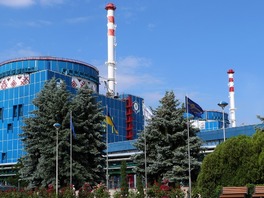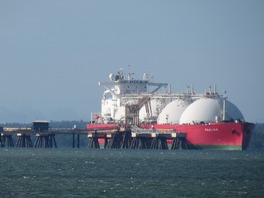The Energy CommunitySecretariat has found inconsistencies in the reporting data submitted by the Ministry of Energy of Ukraine on emissions from large combustion plants, which are included in the country’s National Emission Reduction Plan (NERP). Two of the Ukrainian power plants that were caught underreporting emissions of hazardous pollutants are currently exporting electricity to the EU.
Facts of misconduct became public during parliamentary hearings regarding current status and principal shortcomings of Ukraine’s National Emission Reduction Plan, which took place on January 19 in the format of a videoconference. The event gathered all relevant stakeholders, including representatives of the Energy Community Secretariat and European Commission.
The meeting was chaired by a member of parliament Lesia Vasylenko, Head of the Subcommittee on Adaptation to Climate Change and Atmospheric Air Protection, and was initiated at the request of more than 30 non-governmental environmental organizations and representatives of communities, that are directly harmed by the effects of toxic air pollution from coal power plants.
“We have registered certain discrepancies in the data reported by Ukraine to the Secretariat. In the case of a number of plants, the emissions that are reported are in fact identical to NERP ceilings for several pollutants. But this is technically not possible, because of the nature of the installations. So, from the secretariat side, we have issued a clarification request to the Ministry of energy on that recently and we are still interested in receiving the reply on that”, communicated Peter Vajda, the Senior Environmental Expert at Energy Community Secretariat.
The emissions reports in question are made under the Large Combustion Plants Directive, which has been in force in Energy Community contracting parties since January 2018. The report for 2018 is missing emissions data for 15 of the stacks that were operating during that year and should have reported emissions. Both 2018 and 2019 reports include plants, such as the Burshtyn and Dobrotvir power plants (which exports electricity to the EU) and a number of others, whose reported emissions match the limits set years ago in the National Emissions Reduction Plan down to the exact figure. This was first revealed by analysis of national reporting performed by Bankwatch in late 2020. Reported emissions that match NERP ceilings are highlighted in red in the table below.

A general framework for the reduction of emissions from large combustion plants and European Commission’s perception of the situation with Ukraine’s NERP was explained at the parliamentary hearings by Torsten Woellert, Minister Counselor at EU Delegation to Ukraine:
“We see now old inefficient coal-fired power plants, which are no longer very reliable, we see more outages now than we’ve seen in last couple of years. So there needs to be a major modernization drive. […] With the previous government we’ve seen some discussions about tenders for new power generation capacities, more flexible ones, maybe on gas, maybe with storage, which corresponds to a modern energy system. To prolong the lifetime of outdated coal-fired power plants, which are not efficient, no longer reliable, doesn’t serve any purpose: it’s bad for health, it’s bad for the environment, it’s bad for the energy system. So, we think this is not really the way forward. We would rather like to engage in the discussion … on how to modernize the energy system so environmental constraints can be fulfilled, so that you don’t have to break your international commitments, that we have a more reliable, more effective energy system, and that Ukraine can engage in what the government wants to do – engage in the Green Deal with European Union”.
He also emphasized that the European Green Deal includes questions of carbon footprint and an upcoming carbon border adjustment mechanism, which may not be limited only to power plants, but can also be applicable to industrial products and goods manufactured in Ukraine.
“I think we have to see this in a complex way, because if you are not implementing your commitments on a very important environmental issue, how credible are you if you want to cooperate on the Green Deal. Even if you want to integrate your energy system with European ones because we have plans and there is a roadmap agreed between Ukrenergo and ENTSO-E to synchronize our power systems. But you can only do this if you have reliable, modern, and clean power plants. You will not be able to do this on the basis of outdated, old, and dirty power plants”, the EU representative stated.
Based on reports and materials of these parliamentary hearings the Committee of the Verkhovna Rada of Ukraine on Environmental Policy and Nature Management will formulate recommendations and will appeal to the Cabinet of Ministers of Ukraine and the Office of the President of Ukraine on the need to meet the deadlines for emission reduction measures for large combustion plants.
"In the privatization contracts of TPPs and CHPs, environmental commitments were written in black and white, in particular, the establishment of an emission monitoring system, investment in the modernization of large combustion plants. Neither that nor that point is executed. Now the ball is in the court of the Ministry of Energy, which should propose financial mechanisms that will unlock emissions reductions in Ukraine," - noted Lesya Vasylenko on her Facebook page after the parliamentary hearings.
According to an analytical report published by the Center for Research on Energy and Clean Air in February 2020, Ukraine ranks 4th in the world in terms of economic losses from air pollution, second only to China, Bulgaria and Hungary. According to the center's analysis, in 2018 Ukraine lost 5.8% of GDP due to morbidity and mortality caused by toxic air pollution. The total annual economic losses in 2018 from air pollution by fossil fuel combustion products in the world are estimated at 2.9 trillion US dollars, or 3.3% of world GDP.

Since 2013 two major coal-fired power plants in western Ukraine (Burstyn and Dobrotvir TPPs), after being privatized by private vertically integrated energy company DTEK owned by Rinat Akhmetov, have significantly increased their production and provided electricity for exports to Ukraine’s neighbors Hungary, Slovakia, Romania and Poland. Side effects of this development such as unregulated greenhouse gas emissions and toxic air pollution in Ukraine, continue to be largely unnoticed.
In November 2020 two major accidents at Dobrotvir and Burshtyn thermal power plants happened. They resulted in large capacity outages and emergency situations for transmission grid operator NPC “Ukrenergo” and grid operators of Poland and Hungary.
On November 17, all four generators at Dobrotvir TPPs with a total capacity of 300 MW unexpectedly were disconnected and switched off due to malfunction of the power station’s grid connection equipment, which is operating far beyond its designated lifetime. This power station was built in 1954 and is one of the oldest in the country. 200 MW of its capacity is utilized exclusively for electricity exports to Poland.
On November 27 three 200 MW coal units (600 MW in total) simultaneously failed at Burstyn TPP and for a certain time were undergoing emergency repairs. To prevent blackouts the Hungarian grid operator MAVIR had to provide emergency assistance and enact power generation reserves following the request from Ukrenergo. Burshtyn TPP is the main power source in the grid area of the so-called “Burstyn energy island”, covering Transcarpathia, Ivano-Frankivsk and Lviv regions, which is synchronized with the continental European grid ENTSO-E.
Ukraine, following the terms of the Energy Community Treaty approved a National Emission Reduction Plan for large combustion plants in November 2017. The goal of the NERP is to gradually reduce emissions of sulfur dioxide, nitrogen oxides, and fly ash from existing large combustion plants with a rated thermal capacity of 50 MW or more. The National Emission Reduction Plan is valid from January 1, 2018, to December 31, 2033. During the period of NERP, domestic operators should reduce emissions of sulfur dioxide by 95%, nitrogen oxides by 72%, and ash dust by 97% of the 2018 volumes.




